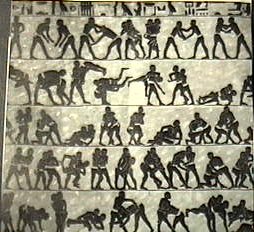When you’re a martial artist and you have not seen the film, “A Historical past of Violence,” it’s best to. Something designed by human beings displays visible qualities which can be specific to the place and interval in which it originates. Yet when he came to put in writing his Civilization of the Renaissance in Italy, printed in 1860, he did not discuss the visual arts, and outlined his conception of Italian Renaissance culture fully from written sources.
These included: Die Brucke (1905-eleven), a gaggle based mostly in Dresden in 1905, which mixed components of conventional German art with Put up-Impressionist and Fauvist styles, exemplified in works by Ernst Ludwig Kirchner, Karl Schmidt-Rottluff, Erik Heckel, and Emil Nolde; Der Blaue Reiter (1911-14), a loose association of artists primarily based in Munich, including Wassily Kandinsky, Franz Marc, August Macke, and Paul Klee; Die Neue Sachlichkeit (1920s) a post-struggle satirical-realist group whose members included Otto Dix, George Grosz, Christian Schad and to a lesser extent Max Beckmann.

This style grew up partly as a reaction towards the idealistic forms of the Excessive Renaissance and partly as a mirrored image of troubled occasions – Martin Luther had begun the Reformation, while Rome itself had simply been sacked by mercenaries. In portray, the Rococo type was championed by the French artists Watteau (1684-1721), Fragonard (1732-1806), and Boucher (1703-70).
There may be some evidence to help this argument, and we will thus contemplate how the form and its probably audience formed a part of the evolving tangle that historians have come to name fashionable culture. In Art History, you will develop an unbiased important involvement with artworks and visual culture. Which means not solely investigating artefacts you may see in museums and galleries, but additionally those making up our everyday visible and technological setting: including urban landscapes, film and video, and well-liked culture.
Portray, mosaic works) developed a selected model of meaningful imagery (iconography) designed to present complex theology in a very simple way. The good paintings of outdated and new masters and mistresses are there, but so are LP album covers, printed biscuit tins, and other cultural varieties not yet enshrined in Nationwide Galleries or the vaults of Pension Funds.